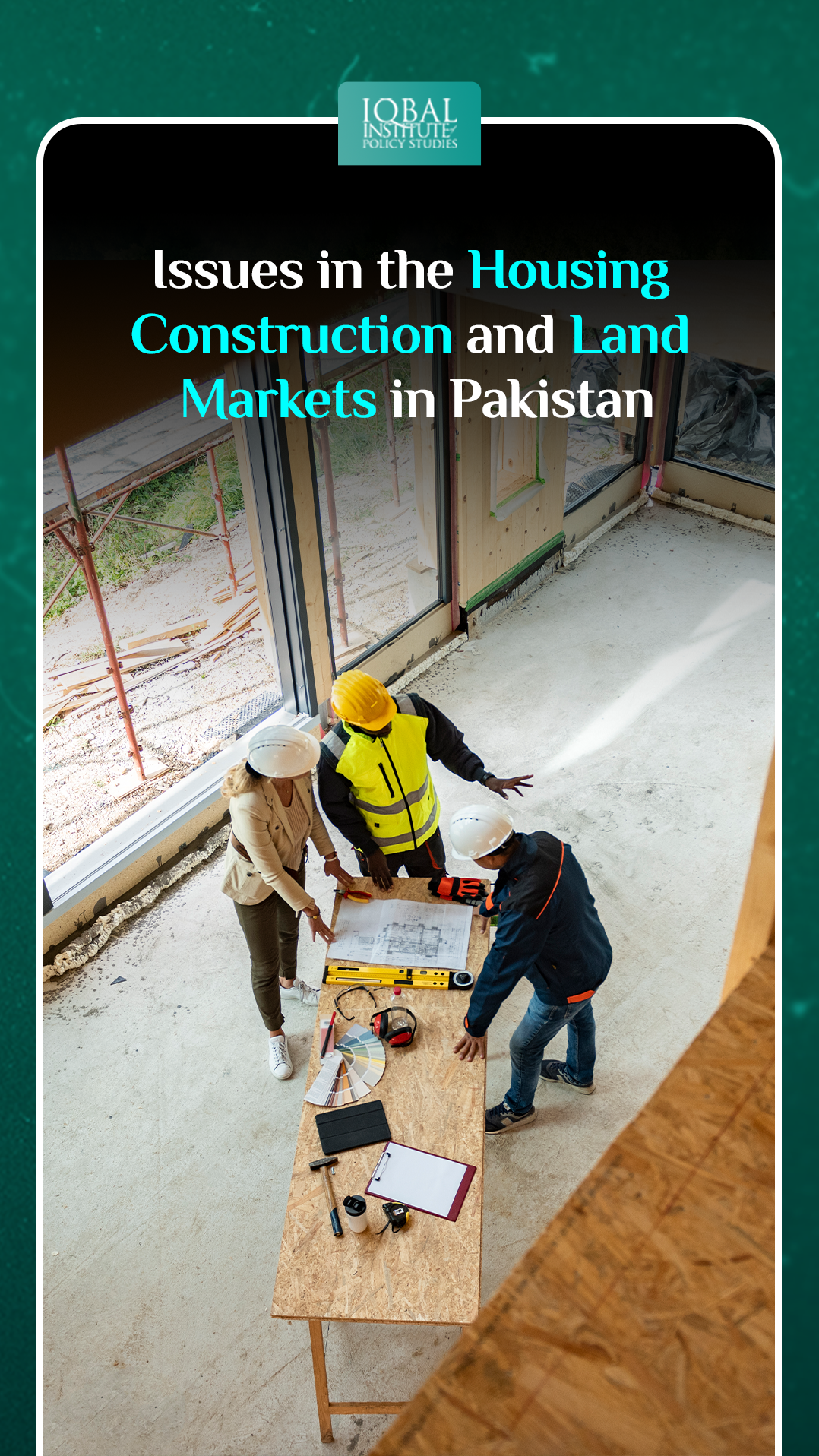Housing construction is vital to national economies as it assures urban development and sustainability. It provides indispensable structures like public and private infrastructures and is associated with attaining socio-economic developmental goals. The housing demand is growing, which has increased housing construction activity and productivity. However, it is threatened by a surge in land prices, a spike in real estate interest rates, and increasing construction materials prices. This hinders the growth trajectory of the housing market, leading to several challenges in the value chain and land market.
Moreover, unplanned urban planning has resulted in the concentration of a massive population around big cities, segregating the low-income class from the high-income ones. As a result, housing and land become unattainable and outside the reach of the lower and middle classes. The government needs to address the main constraints which impede the growth of housing construction and the performance of the land market to ensure economic, social, and civic development in the country.
Major Constraints in Housing Construction and Land Markets
Vacant Developed Plots
An increase in land price results in investors holding empty land as an investment. Moreover, 50 to 70% of court cases in Pakistan are related to land or ownership issues (World Bank, 2017). As a result, the land could be utilised more effectively. Strict tenant laws, zoning laws, building codes, low property taxes on unused land, and lack of government land in the market make it easy to hold on the vacant land. According to a World Bank report, approximately 80% of formally developed plots in Lahore are vacant (Dowall & Ellis, 2009). This widens the gap between sufficient housing demand and supply.
Underutilised Government Land
The majority of the state-owned land in Pakistan is underutilised and unproductive. Approximately 90% of the government-owned lands in Punjab, KPK, and federal areas is worth hundreds of billions of rupees but in the form of dead capital (DAWN, 2018). Moreover, 40% of the urban population live in slums or informal settlements (The World Bank, 2018) within the city centre or the urban periphery. This land goes unused as the government has failed to relocate these settlements elsewhere. Moreover, acquiring land from the government is a long and slow process, which hinders with development or construction of infrastructures.
Land Title Issues
The land acquisition and transfer process in Pakistan is non-transparent and complicated. Approximately 190 million land records of around 50 million landowners are managed manually through traditional methods in Pakistan (Shabbir, Shahid, Atif, & Niaz, 2020). The Board of Revenue institution, responsible for legally maintaining land records in Pakistan, has around 14000 patwaris or village accountants as their junior officers (Shabbir, Shahid, Atif, & Niaz, 2020). Most of the changes or tampering of the original land records regarding its legal ownership, use, and taxation by these patwaris or legal authorities go unchecked due to the manual system. As a result, foreign investors and private banks are discouraged from dealing outside the defence land. Hence, housing construction and land markets go unproductive.
Restrictive Zoning Laws
Zoning is significant in increasing the supply of building land, which can accommodate and benefit the low-income class. However, Pakistan’s weak governance and spatial planning system have made the conversion of rural land into urban land at the town’s periphery problematic, which was the main source of the housing industry’s growth. For example, In Lahore, the Provincial government now requires housing projects to be at least 100 canals in size (12.5 acres) to prevent illegal schemes initiated by small, short-lived developers (RUDA, 2021). This law affects the large professional developers the most, as such large slots are difficult to find within the city.
Stringent Building Codes
Overly restrictive building codes and laws effectively limit urban land use and increase its price. For example, limiting the height of residential buildings results in less accommodation, thus the housing shortage. The total number of storeys permissible in an apartment building allowed on residential plots in approved schemes/controlled areas, excluding basements, is at most seven (LDA, 2019). Furthermore, some city buildings cannot be put on the secondary market because their developer did not follow the building codes. The resolution of the legal status of such buildings is either pending or the developers are no longer around.
Poor Judicial System
There are over a million land-related disputes in the courts pending resolution, which typically takes years. This backlog becomes an opportunity for land mafias and short-lived developers to flourish. As a result, illegal housing schemes develop that otherwise could have been used for productive purposes. For example, lease mafias may act as monopolist mediators in the supply of construction materials, further increasing the housing cost.
Lack of Funds to Develop Infrastructure
Pakistan’s government cannot prioritise infrastructure development due to recurring debt servicing, defence, and general administration expenditures. Moreover, property tax is one of the main sources of revenue, which has barely increased in real terms despite a marked increase in construction activities and a tripling in property prices. The key reasons for this are poor tax law enforcement and coverage. Hence, a revenue shortage results in negligence in the development of infrastructure by the state.
The Way Forward
Relaxing zoning restrictions and building codes, along with enforcing fees on unused land, can restrict the undesirable use of land and increase the provision of inhabitable space per unit of land.
The government should expedite large land disputes and promote Alternative Dispute Resolution (ADR) by prioritising cases to free up as much land as possible from endless judiciary proceedings.
Reforming utility pricing policies, setting and enforcing service delivery standards on government-owned utilities (at least for large-scale housing projects) and promoting Public Private Partnerships is essential for rapid developments in the housing sector and construction industry.
The national government should financially and technically support provincial governments so that they harmonise, accelerate and scale up their existing reform of land title initiatives by digitising the system overseen by regulatory authorities.
The government should draft a national land development plan with critical inputs from the provinces. These master plans should include the provision for satellite cities, good practice large industrial, special tourism zones, and plans to rely much more on the growth of medium size cities to accommodate the future rural/urban migration.
Conclusion
Land and housing are significant for developing economies. It provides employment opportunities, increases social productivity and leads to economic growth. To grow the country’s economy and accommodate the massive population, Pakistan needs to address the constraints that hinder the development and growth of the housing sector and land markets. Intelligent policies and effective strategies that tackle the issues mentioned above will result in urban development and economic prosperity in the long run.



Leave a Reply